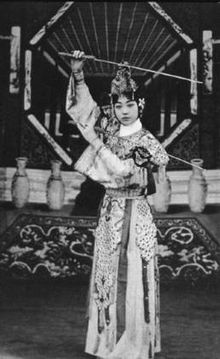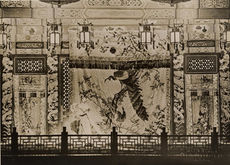
Room 03
A Flowering of
Cultural Exchanges
Watercolor drawing of Mei Lanfang by Fukuchi Nobuyo 福地信世 (1877-1934).
Source: Waseda University Tsubouchi Memorial Theatre Museum.


What did Qi see in Paris?
His Harvest from Europe, 1900



Mei Lanfang 梅蘭芳 in the role of the Taoist nun Chen Miaochang, in Peking opera The tale of the Jade hairpin.
Source: The New York Public Library for the Performing Arts
A Cultural Turning Point: 1900
The Year 1900 was a turning point for the
arts. With the Paris exhibition, modern trends in painting, sculpture, dance, opera, and writing, which had been developing in Europe in a critique of the preferences of the cultural establishment, became mainstream and even dominant. Eventually, these new trends would affect a young man and his stage art in faraway China, Mei Lanfang. They would stimulate fundamental changes in the Peking Opera he was performing and would make him into a national and international star.
Qi Rushan at the Paris Opera
The leading figure in Peking Opera Reform was
Qi Rushan 齊如山 (1877 - 1962). Several extended stays as a businessman in Europe between 1908 and 1913 took him to cultural centers such as Paris, Berlin, Vienna, Brussels, and London. This gave him the chance to go “about every day” to the opera and to see the modernist directors, dancers, and actors who now dominated the stage. First among them were the dancer Loïe Fuller and the Ballets Russes dancers under the direction of Sergei Diaghilev (1872 - 1929).




Paris Exposition, view from ground level of the
Eiffel tower with Parisians promenading, 1889.


Diaghilev's Ballets Russes (1909 - 1929) demonstrating the notion of a "total work of art" in which "oriental dance" played a major role.
Loïe Fuller's (1862 - 1928) performances displaying the integration of silk dance with multicolored lighting effects on stage.
Qi Rushan and
Peking Opera Reform
Qi Rushan had spent substantial time in Paris between 1908 and 1913. He used this occasion to see as many operas and ballets as possible, and to travel to other cultural centers in Europe. After his return to China, luck brought him together with the exceptionally gifted young dan actor Mei Lanfang. Mei was interested in reforms that would open the way for “female” dan roles to become the main protagonist. The major transformation brought about by Mei and Qi’s reforms was the introduction of a new aesthetic system that was based on dance. Together they created many new operas with dan in the lead. At the center of these new operas was now dance. Up to the 1910s, Peking opera was a performing art form that excelled in singing and celebrated the voice. Through the introduction of dance, Mei and Qi helped transform Peking opera aesthetic from an emphasis on listening to that of viewing the performance.
The Goddess Spreads Flowers was one of the earliest and signature pieces of the Peking Opera reform pioneered by these two men. It engaged with Sergei Diaghilev’s notion of a “total work of art” that would integrate singing, dancing, music, stage décor, costume, and lighting into a unified choreography as he had done in with his troupe Ballets Russes. More visibly, it engaged with Fuller’s famous silk dance by integrating its dazzling forms and multicolored lighting effects into the dance of The Goddess Spreads Flowers.

The Creation of
The Goddess Spreads Flowers
Tiannü sanhua 天女散花(1917)
Chinese stage design for NY Broadway 49th Street theatre with Mei Lanfang in the role of the Goddess.
Photographed by Florence Vandamm, 1930.
Source: New York Public Library
Changing the Core: Innovations in The Goddess Spreads Flowers
The Goddess Spreads Flowers put a new kind of
Peking opera on stage. This genre had been criticized by the advocates of the need for a “new culture” in China as being wedded to the “feudal” past and dependent on the patronage of the last Chinese dynasty, which had just been forced to abdicate to make place for a republic.
The Goddess gave the answers with dramatic
innovations: It featured ravishingly beautiful dance pieces at its center although dance had not been part of the Peking Opera repertoire; it marked a transition from ear to the eye as the instrument of audience appreciation; it showed a new performance style with emotional and psychological depth radiating from the dance performance to the smallest gestures; it had a woman as chief protagonist; it filled the normally sparingly furnished stage with décor and props; it came with a new kind of music that was suited to accompany dance; it used the most modern lighting techniques.


Mei Lanfang in The Goddess Spread Flowers. 1917. Photography.
Source: Mei Shaowu, ed., Mei Lanfang: A pictorial biography. (Beijing: Beijing chubanshe, 1997).




The Production of The Goddess Spreads Flowers
It took as long as eight months to
conceptualize these reforms, design ways to realize them, and develop the actual performance. While the performances in Paris clearly had been an inspiration, this did not lead to imitation but released vast creative energies to join the world with the creation of dances that was clearly Chinese. The story of The Goddess Spreads Flowers comes from the Vimalakirti-nirdesa, a Buddhist text. This scene, was the subject of many Chinese paintings since medieval times, called sanhua tu 散花圖 (Image of Spreading Flowers). They showed the goddess floating weightlessly above the disciples. Mei Lanfang saw one of the paintings on this subject at a friend's house and tried to imagine it as a dance.
The Premiere
On December 1 1917, the by now
long-expected new opera was performed at the Jixiang theater
吉祥戲園 in Beijing, which had the necessary modern equipment. The house was sold out, it was a major event. There was so much novelty.


Watercolor drawings by Fukuchi Nobuyo 福地信世 (1877-1934) of Mei Lanfang in the 1910s, Beijing.
Source: Waseda University Tsubouchi Memorial Theatre Museum.

The "Four Great Dan Actors." They are Mei Lanfang 梅兰芳, Cheng Yanqiu 程砚秋,
Shang Xiaoyun 尚小云, Xun Huisheng 荀慧生.
Source: Baidu
The Reception
The Goddess Spreads Flowers was an
instant success. Performances were sold out. Mei Lanfang was invited to perform in Japan in 1919, and the program included the Goddess. Studio photographs of his Goddess performance were widely sold and distributed to media, which would reproduce them. They soon found their way overseas. The window opened by Goddess for dance and dan actors encouraged other dan actors to follow suit. By the mid-1920s, dan actors with new plays written for them dominated the stage. Four of them, the “four great and famous dan,” sida mingdan 四大名旦, rose to national, and one of them, Mei Lanfang, to international stardom.
Is This Still Peking Opera?
Success, however, came with a price. A public
debate started whether this was still Peking Opera. The dance was new, and it looked foreign. Peking Opera, however, was no museum piece. It had been formed some one hundred and fifty years earlier through a combination of features from different local operas, and it continued to evolve and change. Far from uprooting and destroying Peking Opera, the reforms saved it by bringing it to new urban audiences and adjusting it to “republican” tastes. Defending the innovations as being in tune with the globalization in areas such as trade, technology and political institutions, one writer claimed that Goddess was actually “world dance,” incorporating as it did many different elements from abroad and from China’s past.


Gongyan bao 公言報 (The public word) announcement on Mei Lanfang's Beijing performance (November 29 - December 22, 1917).


Film footage of Mei Lanfang in Hegemon King Bids Farewell to His Lady (1956).
Photos of Mei Lanfang in Hegemon King Bids Farewell to His Lady.
Finding the
"Authentic" Form
Goddess was based on a scene from a Buddhist text. This was a first, and this text was a translation from Sanskrit. The libretto of Goddess closely follows this translation. Even though the scene of the dancing goddess had been often painted by Chinese painters, the figure of the goddess was originally an Indian figure, an apsara, a type of winged divine beings surrounding holy scenes. Mei Lanfang played the lead apsara which the Chinese translated as Heavenly maiden (Goddess). These choices of the text, the lead role, and dance highlight the desire to break with a tradition where opera plots had been taken from historical novels with warriors, rulers, high officials and gods as the –always male- chief protagonists. Once this had been done, Qi Rushan and Mei Lanfang changed course to overcome what made the piece seem foreign. While maintaining all of their innovations, they were now also looking for a more recognizably authentic Chinese form. For their 1921 new opera Hegemon King Bids Farewell to His Concubine, Bawang bieji 霸王別姬, they found solution, the sword dance.

Connections Across Cultures:
Dynamic of Cultural Interaction through Dance
Ruth St. Denis and husband Ted Shawn, of the Denishawn dance company, strike a pose circa 1920.
Source: Shorpy


Mei Lanfang, Ruth St. Denis and Ted Shawn.
Source: Jerome Robbins Dance Division, New York Public Library
Left: Mei Lanfang after his performance of Hegemon King Bids Farewell to His Concubine on stage with Ruth St Denis and Ted Shawn who also still had their costumes on. Beijing, 1925. Right: Ruth St Denis in Peking opera costume given to her by Mei Lanfang. Beijing, 1925.
Sources: Mei Shaowu, ed., Mei Lanfang: A pictorial biography. 1997; and Jerome Robbins Dance Division, New York Public Library
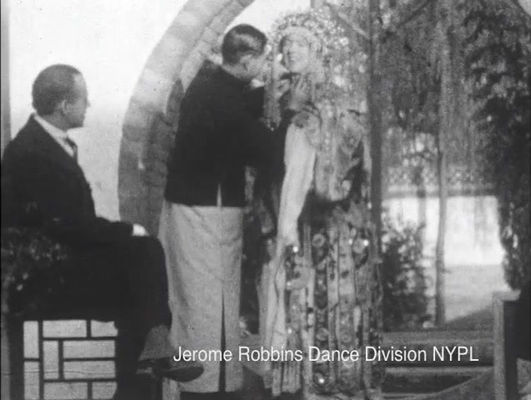

Denishawn and
The Goddess Spreads Flowers
Their “Oriental Tour” brought the Denishawn
Dancers in 1925 to Beijing. They wanted to meet Mei Lanfang, whose fame had by then spread among the global performance community. Mei Lanfang, who had been prevented from performing because of fighting among local warlords, agreed to a back-to-back performance with them. He played in Hegemon King Bids Farewell to His Lady. When St. Denis and Shawn visited next day, he performed for them the dances from Goddess and another new play, Daiyu Buries the Petals.
The Denishawn
Oriental Tour
Modern dance in Europe and the Americas had taken much inspiration from images of dances in antiquity and from performances of “oriental” dancers in Europe. Ruth St. Denis and Ted Shawn, the pioneers of modern dance in the US, went a step further with their Denishawn Dancers. Their “Oriental Tours” brought them to Asia, including China. They performed, learned about local dance forms, and then integrated some of them into their next performances. Eventually, their “gleanings from the Buddha fields” were shown to American audiences.



The Denishawn tour of the 'Orient' in 1925 - 1926.
Source: University Archives and Special Collections, Adelphi University, Garden City, New York
Photographs of Denishawn dancers on tour.
Source: Denishawn Collection, The New York Public Library
Mei Lanfang
on the World Stage
Mei Lanfang embarked on a United States tour in 1930, which brought him to the major east and west coast cities. It ended in a great public success and had a major cultural impact. Among the audience were theater authors and poets such as Thornton Wilder, Garcia Lorca or Marianna Moore. They felt that Mei offered a refreshing and sophisticated alternative to the realism dominating the stage and the literary scene at the time.
In 1935, Mei Lanfang was invited for an
official tour to Moscow. His performances there are legendary to this day because many of the prominent names in leftist avant-garde circles were in the audience, such as Bertold Brecht, Sergei Tretjakov and Sergei Eisenstein, who shot a documentary about him. What they saw and appreciated as the age-old Chinese opera was the product of a radical reform.


Mei Lanfang and Qi Rushan in the United States, 1930.
Mei Lanfang in Russia, 1935.


Migration of Dance
Dynamic of Cultural Interaction through Dance


Top. General Wu's Farewell to His Wife, Denishawn Souvenir, 1926.
Source: Private Collection of Catherine Yeh
Middle. Edith James Long performing the silk sash dance,
inspired by Mei Lanfang's The Goddess Spread Flowers. Shanghai, 1926.
Source: Denishawn Collection. New York Public Library
Bottom. Anne Douglas, Denishawn Souvenir, 1926.
Source: Private Collection of Catherine Yeh



Top.
Middle.
Bottom.
Migration of Dance
Exchange and adaptation is the lifeline of all culture; it is constant and the norm. The dynamics of this process of interaction often overruns the intentions and motivations of those involved. Dance at the world fairs is a case in point. While certain dance styles and gestures became linked to national identity by organizers of the fair, local authorities, and broad parts of the general public, dancers at the fairs were eager to share and learn. The cases of Loïe Fuller, Sada Yacco, Ruth St. Denis and later Mei Lanfang attest to the dynamic process of innovation and renewal triggered by such transcultural interaction.
Loïe Fuller
(1862-1928)
Illinois, United States
Ruth St. Denis
(1879-1968)
New Jersey, United States
Ballet Russes
(1907-1929)
Russia
Belly Dancers
Cairo, Egypt
Sada Yacco
(1871-1946)
Japan
Khmer Dancers
Cambodia
Java Dancers
Indonesia
Mei Lanfang
(1894-1961)
Beijing, China


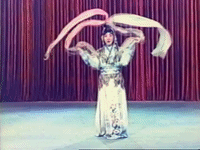
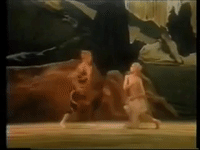



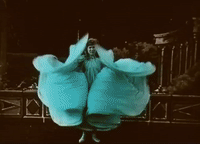
Paris, France
























































